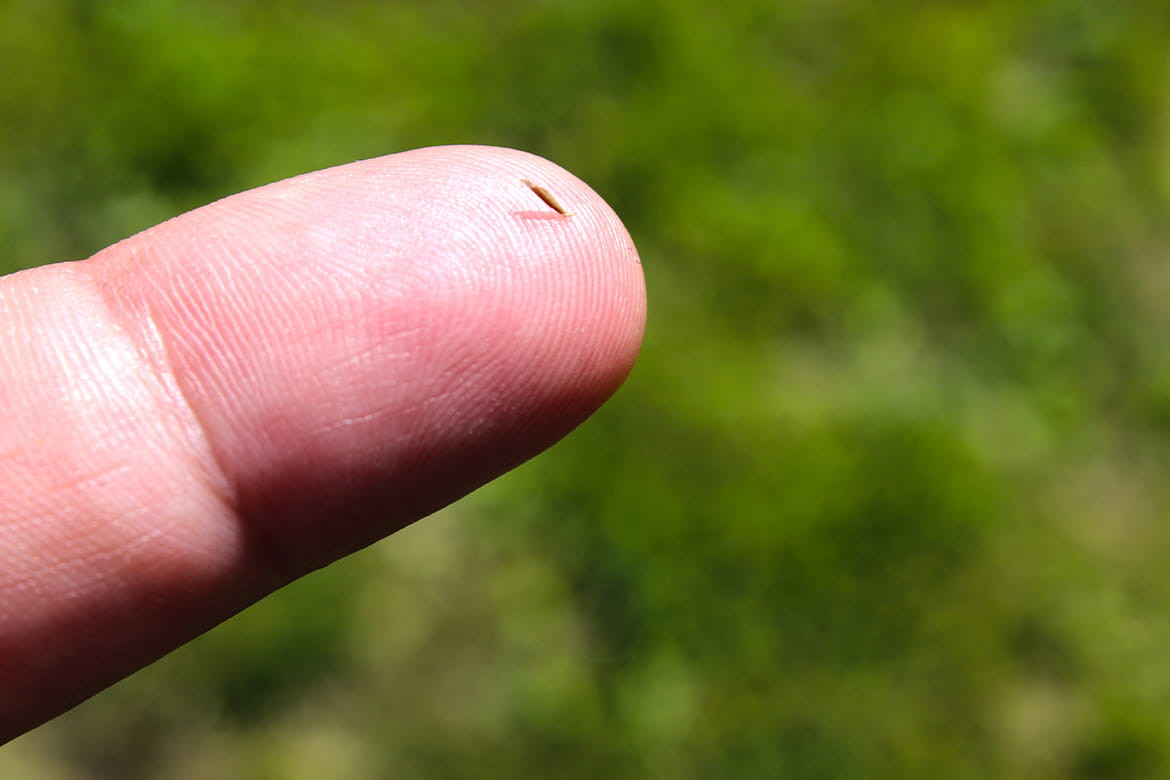Definition
Nasal foreign bodies are a common emergency encountered in medical practice. Typically, nasal foreign bodies are not severe and do not require immediate management. However, certain objects can cause significant damage and need to be removed as soon as possible. These foreign bodies may be obvious or go unnoticed for weeks, months, or even years.
Causes
Foreign bodies trapped in the nose are classified into living and non-living, and organic and inorganic objects. Organic objects usually cause irritation or injury to the nasal lining more quickly because they attract water from surrounding tissues and swell, leading to symptoms appearing sooner than with other objects. In contrast, inorganic objects often do not cause symptoms and are generally found incidentally.
Common foreign bodies found in the nose include pebbles, beads, nuts, chalk, and other small items. Aggressive live foreign bodies, such as maggots, can also be found. Organic foreign bodies commonly include food, rubber, wood, sponges, and nuts. Dangerous non-living foreign bodies that should be removed immediately include batteries and magnets. Batteries can perforate the nasal septum due to inflammation and necrosis, causing liquefaction.
Typically, foreign bodies get stuck in the anterior and lower parts of the nasal cavity. Since most people are right-handed, nasal foreign bodies are more frequently found in the right nostril. These foreign bodies can harden due to mineral accumulation, forming rhinoliths (nasal stones).
Risk factor
Nasal foreign bodies are most commonly found in children, especially those aged 2-5 years. Boys are slightly more affected than girls. Other risk factors include children with autism spectrum disorders, who may tend to insert objects into body orifices. Adults with psychiatric disorders can also have nasal foreign bodies.
Symptoms
Symptoms of a nasal foreign body usually include foul-smelling, pus-like discharge from one nostril. Other signs and symptoms can include nosebleeds, pain, irritation, chronic sinusitis (prolonged inflammation of the air cavities in the facial bones), unilateral nasal obstruction, sudden snoring, sneezing, noisy breathing, and facial swelling on one side.
Diagnosis
Diagnosing a nasal foreign body involves examining the nose. Cooperation from the patient is crucial for diagnosis. If a child is the patient, calming them during the examination is important. Doctors may use a headlamp to illuminate the nasal interior and a nasal speculum to widen the nostril. The ears, sinuses, and chest might also be examined for complications or other foreign bodies.
If the child is anxious during the examination, sedation might be considered to facilitate the procedure.
Imaging is usually only necessary if a foreign body is suspected to have entered the respiratory tract. In such cases, X-rays of the skull, neck, and chest are performed to determine the type and position of the foreign body. CT scans and MRIs may be used if there is suspicion of symptoms caused by a tumor. Laboratory tests are generally not needed but can show elevated white blood cell counts if the object is a living organism.
Management
Efforts to remove a foreign body can be done with or without tools. Non-tool methods include:
- Forced exhalation: This technique involves closing the unaffected nostril and asking the child to blow forcefully through the affected nostril, similar to clearing mucus.
- Mother's kiss technique: The child lies on their back, the parent closes the unaffected nostril with a finger, and then blows air into the child's mouth to expel the foreign body.
If these techniques fail, they may at least move the object forward, making it easier to remove with tools.
Removing a foreign body with tools requires adequate lighting, such as a headlamp. If the child has a foreign body in the nose, a parent or caregiver should restrain the child to prevent excessive movement. The doctor will locate the foreign body and use tools like special nasal instruments, balloons that expand inside the nose, suction devices, or magnets to remove it. The choice of tool depends on the depth, size, and type of object.
Local anesthesia may be used to reduce pain and swelling, facilitating the removal of the foreign body. Medications to constrict blood vessels can help stop any bleeding and reduce swelling around the foreign body.
Complications
About 9% of patients with nasal foreign bodies experience complications such as perforation of the nasal septum, meningitis (inflammation of the brain's lining), sinus infections, epiglottitis, apnea, middle ear infections, facial skin infections, and tetanus. Other complications can include nosebleeds and long-term nasal obstruction. Undetectable objects can remain for months to years. If the foreign body moves to the back of the airway, it can fall into the throat and cause further breathing problems.
Prevention
Preventing foreign bodies in the nose involves supervising children during activities, as these incidents are often seen in children. Additionally, adults with mental health disorders, such as schizophrenia, need monitoring. Keeping small objects out of children's reach and ensuring battery-operated toys are securely closed can help prevent incidents.
When to see a doctor?
If you suspect a nasal foreign body in your child or family member, try the management techniques mentioned before seeking medical help. If these techniques fail, visit the nearest emergency department. Nasal foreign bodies can be life-threatening if mishandled, so getting professional help is crucial to avoid disability or death if the object cannot be removed at home.
- dr. Yuliana Inosensia
Baranowski, K., Aaraj, M., & Sinha, V. (2021). Nasal Foreign Body. Retrieved 28 February 2022, from https://www.ncbi.nlm.nih.gov/books/NBK459279/
Nasal Foreign Bodies - Ear, Nose, and Throat Disorders - MSD Manual Professional Edition. (2021). Retrieved 28 February 2022, from https://www.msdmanuals.com/professional/ear,-nose,-and-throat-disorders/nose-and-paranasal-sinus-disorders/nasal-foreign-bodies
Song, K. (2021). Nasal Foreign Bodies: Overview, Patient History, Physical Examination. Retrieved 28 February 2022, from https://emedicine.medscape.com/article/763767-overview












